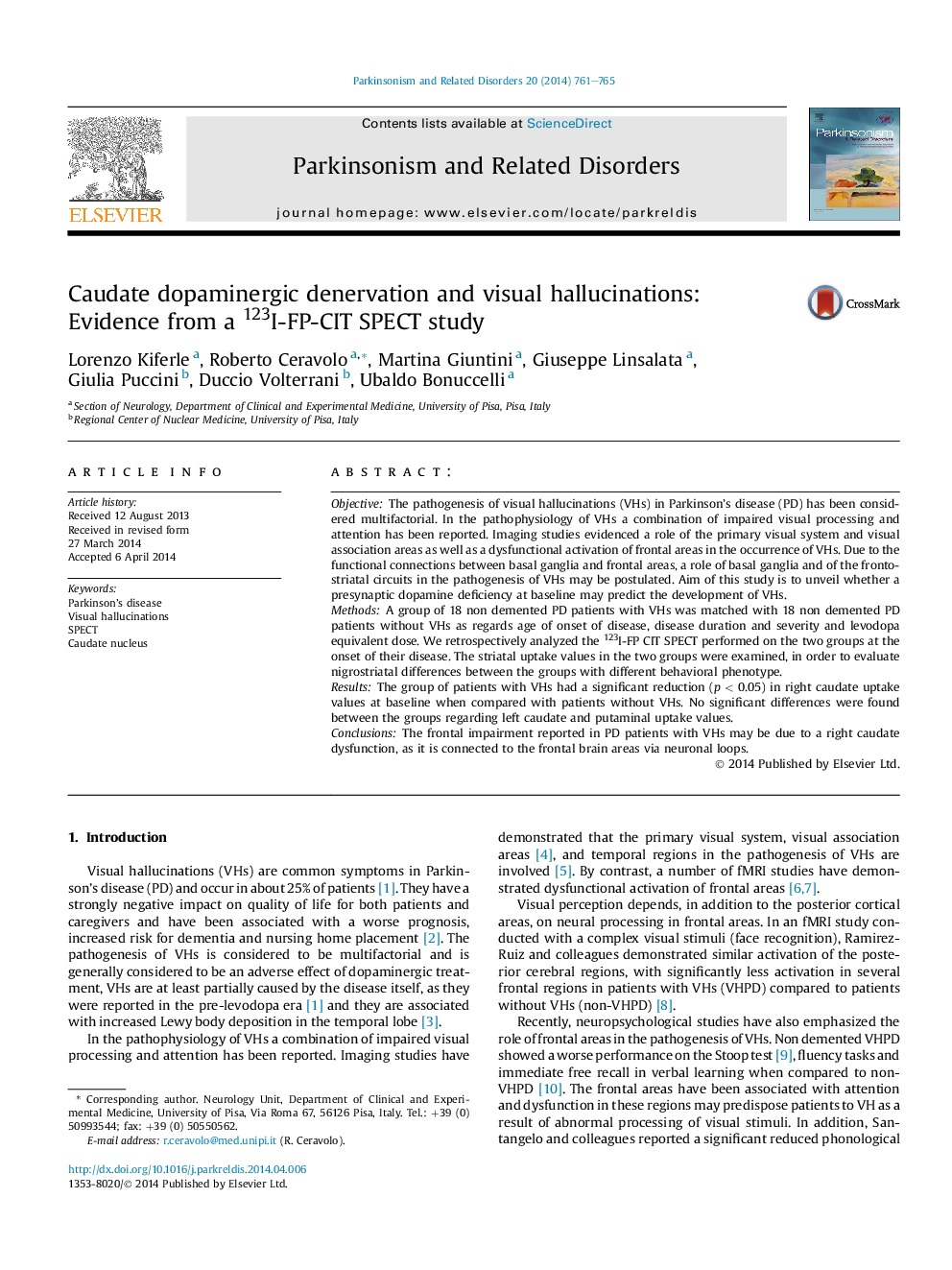| Article ID | Journal | Published Year | Pages | File Type |
|---|---|---|---|---|
| 1920567 | Parkinsonism & Related Disorders | 2014 | 5 Pages |
:ObjectiveThe pathogenesis of visual hallucinations (VHs) in Parkinson’s disease (PD) has been considered multifactorial. In the pathophysiology of VHs a combination of impaired visual processing and attention has been reported. Imaging studies evidenced a role of the primary visual system and visual association areas as well as a dysfunctional activation of frontal areas in the occurrence of VHs. Due to the functional connections between basal ganglia and frontal areas, a role of basal ganglia and of the fronto-striatal circuits in the pathogenesis of VHs may be postulated. Aim of this study is to unveil whether a presynaptic dopamine deficiency at baseline may predict the development of VHs.MethodsA group of 18 non demented PD patients with VHs was matched with 18 non demented PD patients without VHs as regards age of onset of disease, disease duration and severity and levodopa equivalent dose. We retrospectively analyzed the 123I-FP CIT SPECT performed on the two groups at the onset of their disease. The striatal uptake values in the two groups were examined, in order to evaluate nigrostriatal differences between the groups with different behavioral phenotype.ResultsThe group of patients with VHs had a significant reduction (p < 0.05) in right caudate uptake values at baseline when compared with patients without VHs. No significant differences were found between the groups regarding left caudate and putaminal uptake values.ConclusionsThe frontal impairment reported in PD patients with VHs may be due to a right caudate dysfunction, as it is connected to the frontal brain areas via neuronal loops.
